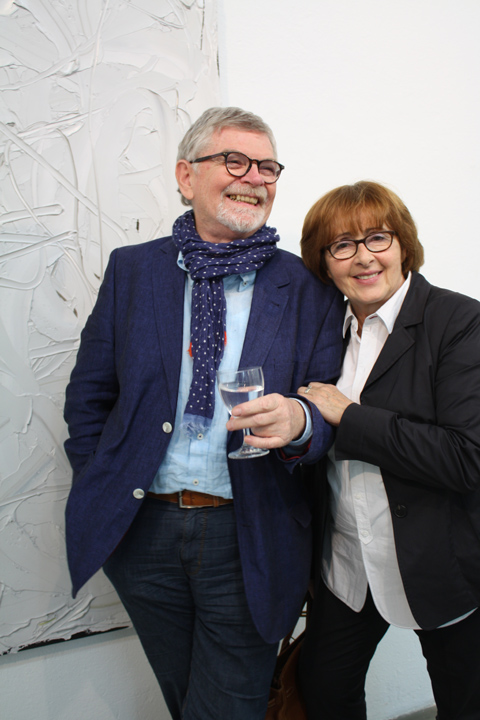Portrait
“I was enormously lucky that I was gifted this second life.”
I was lucky. I was gifted a second life. After an illness over thirty years ago, I could not work as a teacher anymore. As a result, I built a completely new life with the help of and for art.
I would have never started the gallery adventure if it was not for my husband, who is himself immensely interested in art. He generously enabled me to devote myself unconditionally and with all the accompanying risks not only to the traditional mediums of art, but also that of video and media art.
In the mid-1990s, I discovered the work of young video artists Bjørn Melhus and Yves Netzhammer. Since then, the fascination for media and video art has never left me. As a newcomer, I paved the way through the international art world for video and media art; initially without any real specialist knowledge, but with passion and determination.
At the time, there were barely, if any, galleries that adequately presented the moving image. We gave space to these artistic position in the Galerie Anita Beckers.
Today, after so many years, countless exhibitions, external curator work, and participation in exhibitions, I can say: our pioneering work for video art was worthwhile. The medium of the moving image in art has found its place and its due attention within the international art market.
Through the advancement of technology, its ever-increasing use in all mediums of artistic work, and the emergence of new platforms specifically for video and media art, the moving image has long since become an equal medium. The fact that we as a gallery were able to actively accompany this process with internationally established and young, artistic positions is a special stroke of luck. The interlocking of new technologies, the research on artificial intelligence, VR, and computer games today strongly influence the international production of art. On the one hand, they are aids and, on the other hand, content-related components of implementing artistic visions with the means of the present.
Fortunately – and we played a role here as well – today, the major international galleries are also interested in these new hybrid art forms and they have the necessary resources to support the next developmental stages of this art genre.

